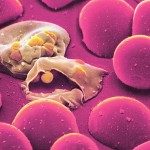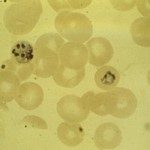Link to Pubmed [PMID] – 6306256
J Mol Biol 1983 Jun; 167(1): 77-101
Recombinant plasmids containing cDNA sequences complementary to the two mouse striated-muscle actin messenger RNAs (pAF81, pAM91) and to a non-muscle actin mRNA (pAL41) have been used to examine the number and organization of actin-related sequences in the mouse genome. A large number (greater than 20) of actin-related sequences are detected on Southern blots of restricted mouse DNA, the majority of which hybridize to both the 5′ and 3′ ends of the actin-coding sequence, even under conditions revealing only sequences greater than 80% homologous to the actin cDNA probes. More stringent washing of these blots indicates that the two striated muscle actins are each encoded by single genes, and that a non-muscle (beta or gamma) actin cDNA detects one homologous and two closely related sequences in mouse DNA. The segregation of the two striated-muscle actin genes in recombinant inbred mouse strains shows that these genes are not closely linked (greater than 1 centimorgan), and that the skeletal muscle actin gene is not linked to a non-muscle actin gene. Screening a bank of mouse genomic DNA, cloned in Charon 4A, indicates that the number of actin-related sequences in the mouse genome is much higher than 20. In particular, five phages have been isolated representing part of a sub-family of 20 to 50 similar but non-identical sequences, only weakly homologous to actin cDNA probes (probably a family of actin pseudogenes), which are the result of a recent amplification of a greater than 17 X 10(3) base region of mouse DNA.


